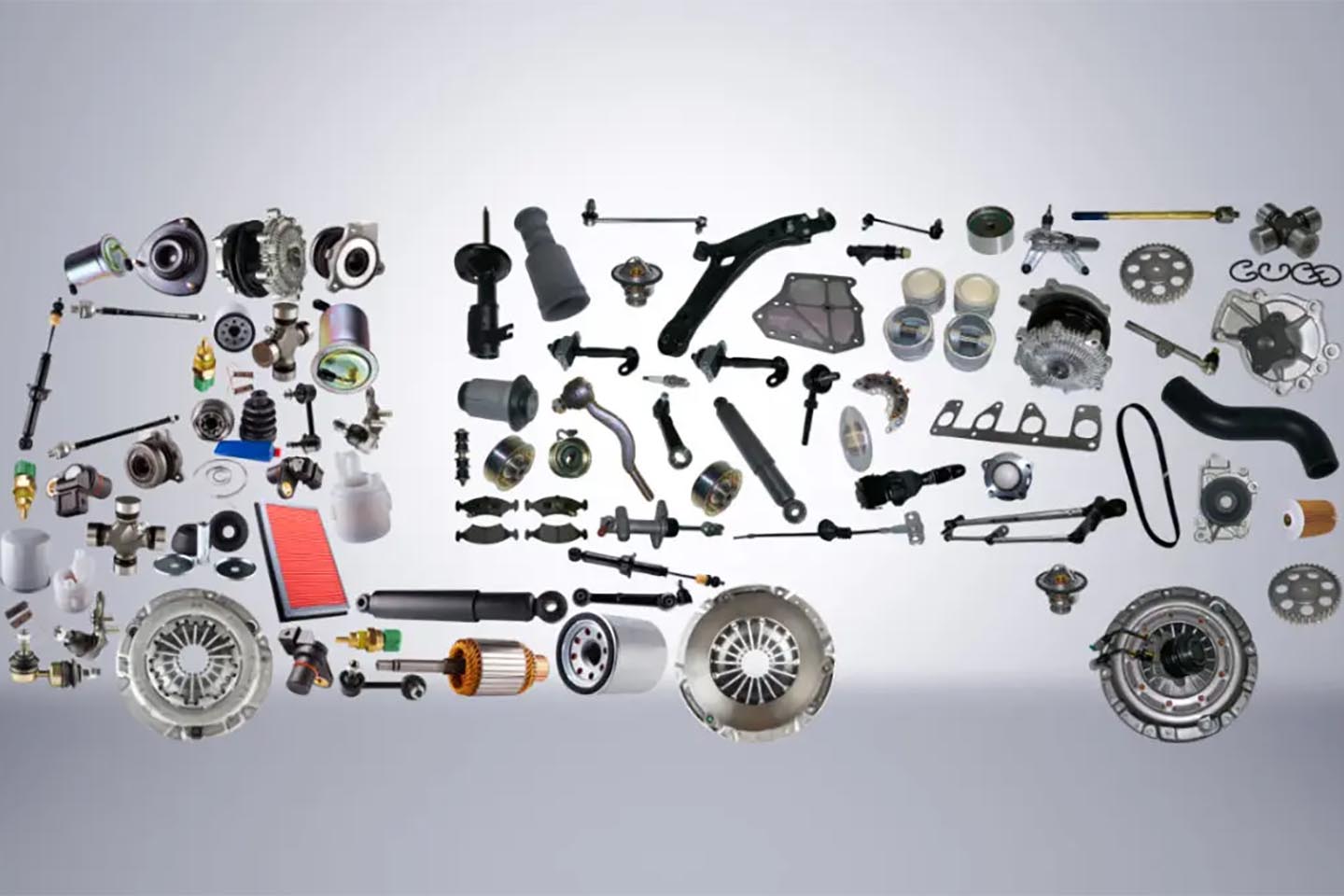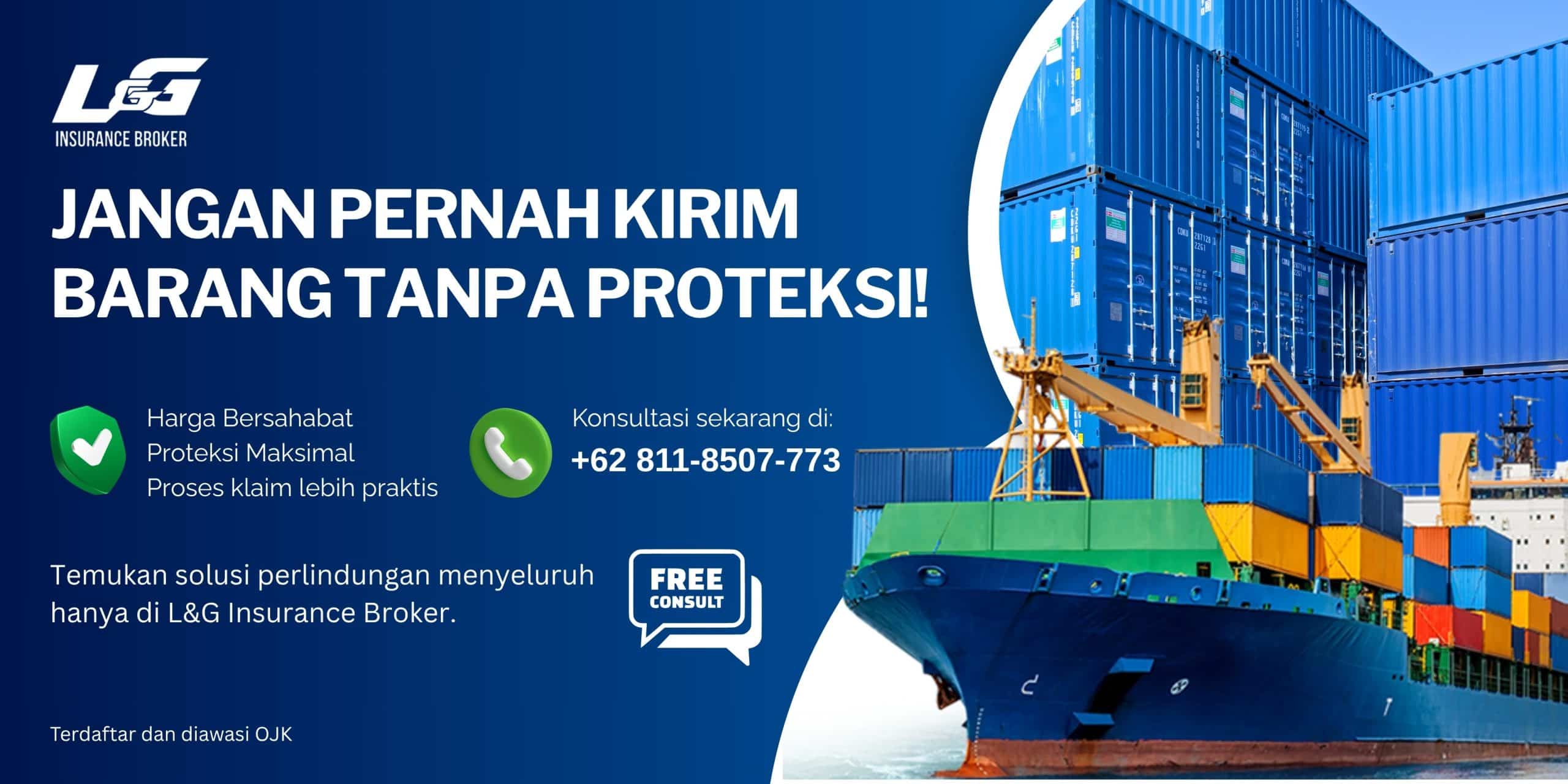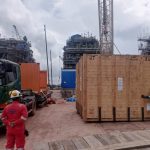Liga Asuransi – Dear risk takers, risk managers, insurers, and business owners.
I hope your business is thriving. Welcome to our blog, where we focus on risk management and insurance. In this article, we explore risk management and insurance for transporting automotive components. If you find this article helpful, please share it with your colleagues.
Happy reading!
The automotive parts industry is a vital pillar of the global economy, supporting the manufacturing, maintenance, and repair of vehicles worldwide. This industry includes components such as engines, transmissions, brakes, and electrical systems, essential for vehicle functionality and safety. It drives technological advancements and creates millions of jobs, contributing significantly to economic growth.
In Indonesia, the automotive parts industry plays a central role in the country’s industrial landscape. As Southeast Asia’s largest economy, Indonesia has a growing automotive market with increasing demand for vehicles. The country hosts global automotive giants and local manufacturers, all relying on quality parts. The industry supports infrastructure projects and urbanization efforts, ensuring reliable transportation for economic activities. It also bolsters local SMEs, supplying parts and services, further enhancing the economy. The availability of quality automotive parts in Indonesia is crucial for maintaining operational and efficient vehicles, supporting the nation’s growth and development.
Types of Automotive Parts Commonly Transported
The transportation of automotive parts is a complex and essential aspect of the automotive industry, ensuring that manufacturers, repair shops, and consumers receive the components needed to keep vehicles running smoothly. Here are some of the most commonly transported automotive parts:
- Engines and Engine Components
Engines and their components, such as pistons, camshafts, and crankshafts, are among the most critical parts transported. These parts are essential for the core functioning of any vehicle and often require specialized handling due to their size, weight, and sensitivity.
- Transmissions and Drivetrain Parts
Transmissions, along with related components like differentials and axles, are crucial for transferring power from the engine to the wheels. These parts are typically heavy and bulky, necessitating careful packaging and secure transportation methods to prevent damage during transit.
- Braking Systems
Brake pads, discs, calipers, and other braking system components are vital for vehicle safety. These parts must be transported with great care to ensure they remain in perfect condition, as any damage could compromise vehicle safety.
- Suspension and Steering Components
Components such as shock absorbers, struts, and steering racks are essential for vehicle handling and comfort. Proper transportation is critical to maintain their integrity, as even minor damage can affect vehicle performance and safety.
- Electrical Systems
Electrical parts, including batteries, alternators, starters, and wiring harnesses, are crucial for the operation of modern vehicles. These components are often delicate and require careful handling and packaging to avoid damage from shocks and vibrations during transportation.
- Body Parts
Body panels, bumpers, doors, and other exterior components are frequently transported to repair shops and assembly lines. These parts are often large and prone to scratches and dents, so protective packaging is essential.
- Interior Components
Seats, dashboards, and other interior parts are regularly transported to manufacturing plants and repair facilities. These components need to be transported with care to prevent cosmetic and structural damage.
- Tires and Wheels
Tires and wheels are some of the most transported automotive parts. While they are generally robust, proper stacking and securing during transportation is necessary to prevent deformation and damage.
Modes of Transportation of Automotive Parts
The transportation of automotive parts involves several modes, each offering unique advantages depending on the nature of the parts, the distance to be covered, and the urgency of delivery. Here are the most common modes of transportation for automotive parts:
- Road Transport
Road transport is one of the most flexible and widely used methods for transporting automotive parts. It is ideal for short to medium distances and allows for door-to-door delivery. Trucks and vans can navigate various terrains and deliver parts directly to factories, warehouses, and retail outlets.
- Rail Transport
Rail transport is efficient for moving large volumes of heavy and bulky automotive parts over long distances. It is cost-effective and environmentally friendly, making it a popular choice for major manufacturers and suppliers.
- Sea Freight
Sea freight is the primary mode of transportation for international shipments of automotive parts. It is cost-effective for large, heavy shipments and allows for the movement of significant quantities of parts across continents.
- Air Freight
Air freight is the fastest mode of transportation and is used for urgent or high-value shipments. Although it is more expensive than other methods, it is ideal for transporting electronic components, critical engine parts, and other time-sensitive items.
- Intermodal Transport
Intermodal transport combines multiple modes of transportation, such as road, rail, and sea, to optimize the movement of automotive parts. This method takes advantage of the strengths of each mode, enhancing efficiency and reducing costs.
Key Stakeholders in the Transportation Process
The transportation of automotive parts involves several key stakeholders, each playing a crucial role in ensuring the safe and efficient delivery of parts. Here are the primary stakeholders involved in the process:
- Manufacturers
Manufacturers produce automotive parts and are responsible for initiating the transportation process. They coordinate with logistics providers to ensure that parts are delivered from the production facility to various destinations, such as assembly plants, warehouses, or retail outlets.
- Logistics Providers
Logistics providers manage the transportation process from start to finish. This includes arranging for the appropriate mode of transport, scheduling shipments, and ensuring timely delivery.
- Freight Forwarders
Freight forwarders act as intermediaries between manufacturers and carriers. They organize the movement of parts across different modes of transportation and handle the logistics of international shipments, including customs clearance and documentation.
- Carriers
Carriers are companies that physically transport automotive parts. They include trucking companies, rail operators, shipping lines, and airlines. Carriers are responsible for the safe and secure movement of parts, ensuring that they are delivered in good condition and on schedule.
- Insurance Providers
Insurance providers offer coverage for potential risks associated with the transportation of automotive parts, such as damage, theft, and loss. They work with logistics providers and manufacturers to tailor insurance policies that mitigate financial risks and provide peace of mind.
Potential Risks in Automotive Parts Transportation
Transporting automotive parts involves several potential risks that can significantly impact the supply chain and operational efficiency. These risks include:
- Damage During Handling and Transit
Automotive parts, ranging from small components to large assemblies, are susceptible to damage during loading, unloading, and transportation. Rough handling, inadequate packaging, and improper securing can lead to scratches, dents, or more severe mechanical damage, affecting the functionality and market value of the parts.
- Theft and Pilferage
High-value automotive parts are prime targets for theft during transit or while stored in warehouses. Insufficient security measures and inadequate surveillance can leave shipments vulnerable, resulting in significant financial losses and operational disruptions.
- Environmental Conditions
Exposure to adverse weather conditions, such as rain, humidity, or extreme temperatures, can damage sensitive automotive parts. Corrosion, rust, and moisture damage are common risks that can degrade the quality and performance of parts, especially those with electronic components.
- Transit Delays
Delays due to logistical challenges, traffic congestion, or customs clearance issues can disrupt the supply chain. Delayed deliveries can lead to production halts, missed deadlines, and increased operational costs, impacting overall business efficiency and customer satisfaction.
- Regulatory Compliance
Non-compliance with transportation regulations, including safety standards, weight restrictions, and documentation requirements, can lead to fines, delays, or shipment rejections. Ensuring all regulatory requirements are met is crucial to avoid these disruptions.
- Natural Disasters
Natural events such as earthquakes, floods, hurricanes, or landslides pose significant risks, especially in regions prone to such disasters. These events can cause complete loss of cargo or severe damage, affecting both suppliers and customers.
- Technological Failures
Failures in tracking systems, communication devices, or other logistics technologies can lead to loss of shipment visibility and control, increasing the risk of delays and mismanagement.
- Human Errors
Mistakes in documentation, incorrect labeling, or improper handling by personnel can lead to misdirected shipments, damage, or non-compliance with regulatory requirements. Such errors can cause significant operational inefficiencies and financial losses.
Risk Management Strategies
Effective risk management strategies are crucial for ensuring the safe and efficient transportation of automotive parts. Here are some key strategies:
- Robust Packaging
Using durable and protective packaging materials to safeguard parts from damage during transit. Custom-fit packaging prevents movement and reduces the risk of scratches, dents, or mechanical damage.
- Secure Handling Protocols
Implementing strict handling procedures at all stages of transportation. Trained personnel should handle parts with care to avoid mishandling and physical damage. Regular training sessions can maintain high standards.
- Enhanced Security Measures
Installing GPS tracking systems and employing secure storage facilities. Tamper-evident seals and surveillance cameras enhance security during storage and transit, reducing the risk of theft and pilferage.
- Optimized Route Planning
Efficient route planning helps avoid high-risk areas prone to theft or adverse weather conditions. Optimizing transportation routes reduces transit time and minimizes exposure to potential delays or hazards.
- Comprehensive Insurance Coverage
Securing insurance that covers risks such as damage, theft, natural disasters, and delays. Tailored policies provide financial protection and peace of mind.
- Regulatory Compliance
Staying updated with transportation regulations and ensuring all documentation and permits are in order. Partnering with customs brokers facilitates smooth customs clearance and helps avoid regulatory penalties.
Insurance Solutions for Automotive Parts Transportation
Insurance solutions are vital for mitigating the financial risks associated with the transportation of automotive parts. Here are key insurance options to consider:
- Marine Cargo Insurance
Marine cargo insurance offers comprehensive coverage for automotive parts transported by sea, air, road, or rail. This type of insurance protects against a wide range of risks, including damage, theft, loss, and delays. Policies can be customized to cover specific routes and types of cargo, ensuring comprehensive protection throughout the transportation process.
- All-Risk Coverage
All-risk coverage provides broad protection against almost all perils, except those explicitly excluded in the policy. This type of insurance covers accidents, natural disasters, and human errors, offering peace of mind that automotive parts are safeguarded against most potential hazards.
- Theft and Vandalism Coverage
Specialized coverage for theft and vandalism is crucial, particularly for high-value automotive parts. This insurance provides financial protection in case of stolen or vandalized goods, ensuring quick recovery of costs and replacement of lost or damaged items.
- Liability Insurance
Liability insurance covers third-party claims for damages or injuries that may occur during the transportation of automotive parts. This type of insurance is essential for protecting businesses against legal liabilities and financial losses.
By securing these insurance solutions, businesses can protect their automotive parts during transit, ensuring financial stability and operational continuity.
Types of Marine Cargo Insurance Coverage: ICC A, ICC B, and ICC C
Marine cargo insurance provides different levels of coverage through three main types: ICC A, ICC B, and ICC C.
- ICC A (All Risks Coverage)
ICC A offers the most comprehensive coverage, protecting against all risks of loss or damage to the insured cargo, except those explicitly excluded. It covers risks such as theft, accidental damage, improper handling, and natural disasters. This type of coverage is ideal for high-value or sensitive cargo requiring maximum protection.
- ICC B (Basic Coverage)
ICC B provides more limited coverage compared to ICC A. It covers specific risks, including fire, explosion, vessel sinking, capsizing, collision, and general average. However, it excludes risks like theft, improper handling, and some natural disasters. This coverage is suitable for cargo with moderate risk exposure.
- ICC C (Minimum Coverage)
ICC C offers the most basic level of coverage, protecting against a narrow range of risks, primarily major incidents like fire, explosion, vessel sinking, and collision. It does not cover theft, minor accidents, or most natural disasters. This type is best for low-value cargo or shipments with low-risk profiles.
Each coverage type caters to different needs, allowing businesses to choose the level of protection that best suits their cargo and risk exposure.
Why Use an Insurance Broker for Automotive Part Transportation?
Using an insurance broker for automotive part transportation offers numerous advantages, ensuring that businesses are adequately protected against the various risks associated with moving valuable and essential components. Here are key reasons why engaging an insurance broker is beneficial:
- Expertise and Knowledge
Insurance brokers possess in-depth knowledge of the insurance market and understand the specific risks involved in transporting automotive parts. Their expertise allows them to identify the most suitable insurance products and provide informed advice tailored to the unique needs of your business.
- Comprehensive Coverage
Brokers have access to a wide range of insurance providers and products. They can compare different policies and negotiate terms to ensure that you receive comprehensive coverage at competitive rates. This ensures that your automotive parts are protected against various risks, including damage, theft, loss, and delays.
- Risk Assessment and Management
A good insurance broker will conduct a thorough risk assessment of your transportation process, identifying potential vulnerabilities and recommending strategies to mitigate these risks. This proactive approach helps in minimizing the likelihood of incidents and ensures that you have adequate protection in place.
- Claims Assistance
In the event of a loss or damage, insurance brokers act as advocates for their clients, managing the claims process on their behalf. They ensure that claims are filed correctly and efficiently, speeding up the settlement process and helping businesses recover quickly from any disruptions.
- Regulatory Compliance
Transportation of automotive parts often involves navigating complex regulatory requirements. Insurance brokers stay up to date with the latest regulations and help ensure that your insurance policies comply with all legal requirements, avoiding potential fines or shipment delays.
- Customized Solutions
Insurance brokers take the time to understand your specific business needs and tailor insurance solutions accordingly. Whether you are dealing with domestic or international shipments, brokers can provide policies that address your specific routes, cargo types, and risk profiles.
- Ongoing Support
An insurance broker provides ongoing support, regularly reviewing and updating your insurance coverage to reflect any changes in your business operations or risk exposure. This ensures continuous protection and peace of mind.
Why Choose L&G Insurance Broker in Indonesia?
When it comes to securing reliable insurance coverage in Indonesia, L&G Insurance Broker stands out as the premier choice for businesses. With an in-depth understanding of the local market and years of industry experience, L&G Insurance Broker offers unparalleled expertise and customized solutions to meet your specific insurance needs.
Key Benefits:
Local Expertise
L&G’s deep knowledge of Indonesia’s insurance landscape ensures that you get the most suitable coverage tailored to the unique risks and regulations in the region.
Comprehensive Coverage
Whether you need insurance for automotive parts transportation, machinery, or other sectors, L&G provides a wide range of products designed to protect your assets effectively.
Competitive Rates
Partnering with top insurers, L&G negotiates the best premiums and terms, ensuring you receive superior coverage at cost-effective rates.
Personalized Service
Dedicated to client satisfaction, L&G offers personalized advice, proactive risk management, and efficient claims handling to ensure your business runs smoothly.
Proven Track Record
Trusted by numerous businesses, L&G has a solid reputation for reliability, professionalism, and exceptional customer service.
Choose L&G Insurance Broker for your insurance needs and experience the peace of mind that comes with knowing you have the best protection and support in the industry.
For all your insurance needs, contact L&G now!
—
MARINE CARGO INSURANCE FOR AUTOMOTIVE COMPONENTS CARGO MORE PROFITABLE WITH MOP (Marine Open Policy) – DON’T WASTE YOUR TIME AND CALL US NOW
24 JAM L&G HOTLINE: 0811-8507-773 (CALL – WHATSAPP – SMS)
website: lngrisk.co.id
Email: customer.support@lngrisk.co.id
—






















